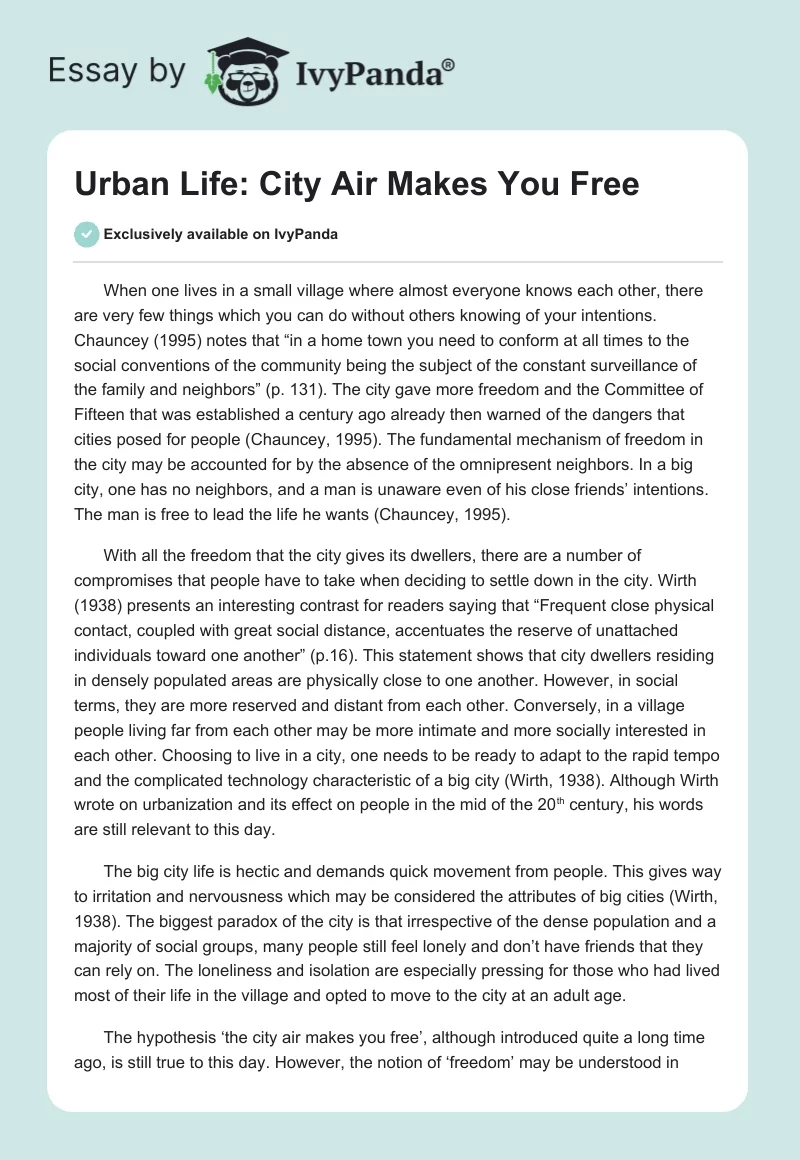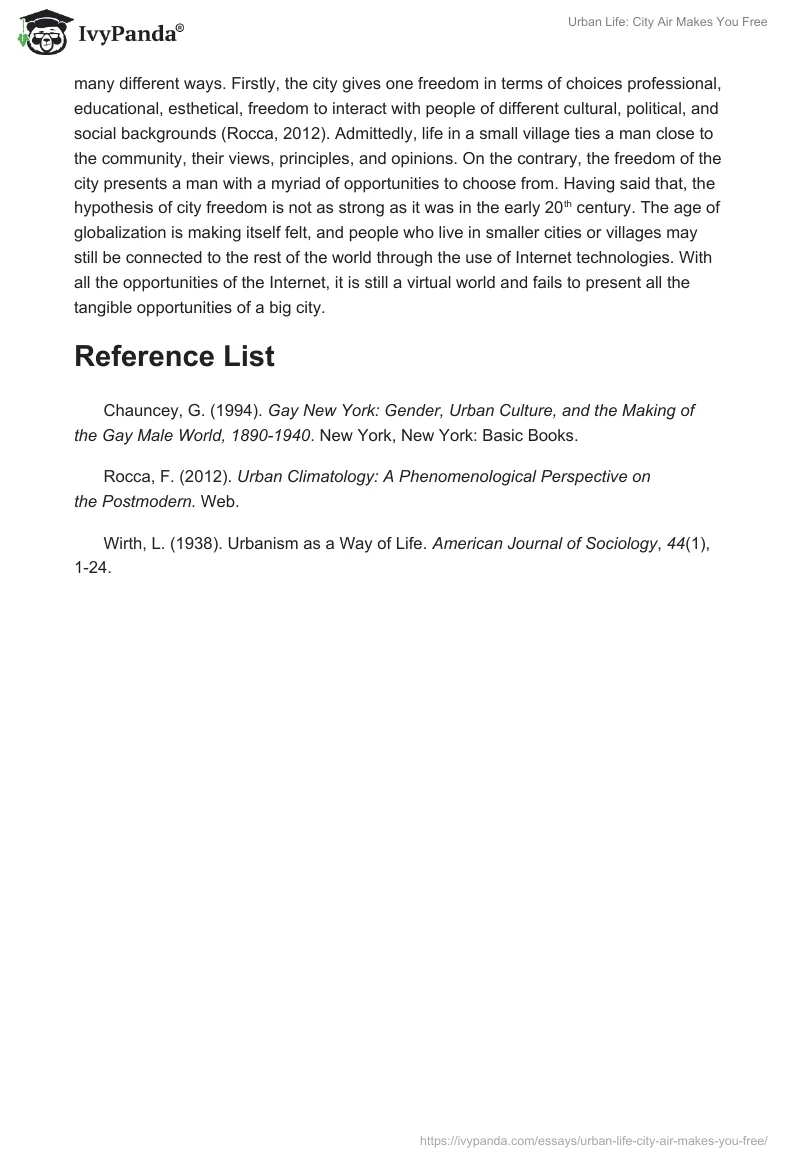When one lives in a small village where almost everyone knows each other, there are very few things which you can do without others knowing of your intentions. Chauncey (1995) notes that “in a home town you need to conform at all times to the social conventions of the community being the subject of the constant surveillance of the family and neighbors” (p. 131). The city gave more freedom and the Committee of Fifteen that was established a century ago already then warned of the dangers that cities posed for people (Chauncey, 1995). The fundamental mechanism of freedom in the city may be accounted for by the absence of the omnipresent neighbors. In a big city, one has no neighbors, and a man is unaware even of his close friends’ intentions. The man is free to lead the life he wants (Chauncey, 1995).
With all the freedom that the city gives its dwellers, there are a number of compromises that people have to take when deciding to settle down in the city. Wirth (1938) presents an interesting contrast for readers saying that “Frequent close physical contact, coupled with great social distance, accentuates the reserve of unattached individuals toward one another” (p.16). This statement shows that city dwellers residing in densely populated areas are physically close to one another. However, in social terms, they are more reserved and distant from each other. Conversely, in a village people living far from each other may be more intimate and more socially interested in each other. Choosing to live in a city, one needs to be ready to adapt to the rapid tempo and the complicated technology characteristic of a big city (Wirth, 1938). Although Wirth wrote on urbanization and its effect on people in the mid of the 20th century, his words are still relevant to this day.
The big city life is hectic and demands quick movement from people. This gives way to irritation and nervousness which may be considered the attributes of big cities (Wirth, 1938). The biggest paradox of the city is that irrespective of the dense population and a majority of social groups, many people still feel lonely and don’t have friends that they can rely on. The loneliness and isolation are especially pressing for those who had lived most of their life in the village and opted to move to the city at an adult age.
The hypothesis ‘the city air makes you free’, although introduced quite a long time ago, is still true to this day. However, the notion of ‘freedom’ may be understood in many different ways. Firstly, the city gives one freedom in terms of choices professional, educational, esthetical, freedom to interact with people of different cultural, political, and social backgrounds (Rocca, 2012). Admittedly, life in a small village ties a man close to the community, their views, principles, and opinions. On the contrary, the freedom of the city presents a man with a myriad of opportunities to choose from. Having said that, the hypothesis of city freedom is not as strong as it was in the early 20th century. The age of globalization is making itself felt, and people who live in smaller cities or villages may still be connected to the rest of the world through the use of Internet technologies. With all the opportunities of the Internet, it is still a virtual world and fails to present all the tangible opportunities of a big city.
Reference List
Chauncey, G. (1994). Gay New York: Gender, Urban Culture, and the Making of the Gay Male World, 1890-1940. New York, New York: Basic Books.
Rocca, F. (2012). Urban Climatology: A Phenomenological Perspective on the Postmodern. Web.
Wirth, L. (1938). Urbanism as a Way of Life. American Journal of Sociology, 44(1), 1-24.


